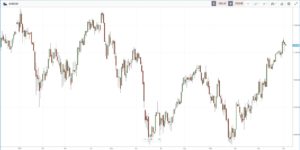The ASX200 added 0.6% last week, taking its loss for the year to just 1.92%. The materials sector led gains for the week, climbing more than 4%, whilst the energy sector was a drag falling 3.15%. Global markets were helped by comments from Federal Reserve Chair Jerome Powell, who alluded that a slowdown in rate hikes could be close.
3 things that happened last week:
1. Monthly inflation comes in under expectations
Australian inflation showed a surprise slowdown last week, with the monthly CPI reading showing inflation was up 6.9% year-over-year but declined from last month’s reading of 7.3% and beat estimates of 7.6%. This has accelerated expectations of a pause from the RBA early in 2023, with two more hikes expected this week and in February. The central bank raised its cash rate to 2.85% from 0.1% in May, but markets expect the cash rate to rise to as high as 3.65% before we see a slowdown. However, that number has dropped significantly from the 4.2% markets were pricing in after last month’s CPI release. The RBA still expects inflation to rise to 8% by the end of the year, but this latest reading will almost certainly please Phillip Lowe and his colleagues.
2. Retail sales drop for the first time in 2022
Last week’s retail sales data showed the first real pullback in consumer spending since December 2021. Retail sales fell by 0.2 per cent in October, a significant difference from the 0.5 per cent gain the market had anticipated. The most significant decline came from department stores, which showed a drop of 2.4 per cent month over month as consumers tighten their belts ahead of the holiday season. One of the many factors for the RBA’s rapid rate rises has been consumer resilience and the general ability to deal with higher borrowing costs. However, households are now reacting to the tightening of fiscal policy and the erosion of wealth that was built during the pandemic. It seems that the weaker consumer confidence readings reported earlier in the year are now beginning to manifest in actual spending trends.
3. A winner and loser last week from the S&P/ASX200
Allkem Ltd (AKE) enjoyed a strong week, climbing by 9.26% after a number of upgrades from brokers. UBS called Allkem its pick of ASX lithium stocks, and Jarden raised its price target to $17.71. It closed Friday’s session at $14.39.
Woodside Energy LTD (WDS) has had a tough week falling by 5.95%. CEO Meg O’Neill raised concerns during the week over the court case from Santos regarding the Barossa gas project. Investors hate uncertainty, which is likely why we saw some selling pressure last week.

3 things to watch for the week ahead:
1. RBA Rate Decision
Following last week’s lower-than-expected inflation reading and a drop in retail sales for the first time in 2022, the RBA’s next move might well be another step down in its rate cycle. Both data releases will have pleased the RBA, with consumer spending beginning to slow and signs that inflation is nearing its peak. Essentially, the RBA is in a position where the pressure to move aggressively to control inflation is gradually easing and may point towards a pause in its rate cycle early in 2023. However, the RBA won’t be getting ahead of themselves, given that this is the first monthly CPI reading for Q4 and doesn’t cover the entire CPI basket released in the quarterly data. Another important factor for the RBA to consider ahead of Wednesday is the local housing market, which is still under pressure, with national average home prices down 7% from their peak in April. The big question will be whether the RBA will hike by 15bps or 25bps on Dec. 6, though it’s worth noting that there will be no rate decision in January, so the RBA may opt for the larger move.
2. GDP Data
The Australian economy is renowned for its resilience, and before COVID-19 in 2020, Australia registered 29 years of consecutive GDP growth, setting a record in 2014 for the longest run of uninterrupted GDP growth in the developed world. On Dec 7, GDP data will be handed down, with expectations for 6.3% growth year-over-year. This data will be for Q3, so it won’t take into account the recent retail sales decline, rate rises from October and November, or the full effect of September’s hike. Household spending will likely be a strong driver of growth, with consumers choosing to spend big on dining out as well as travelling domestically and internationally given the easing of COVID-19 restrictions. However, according to the OECD, GDP could be set to slow down in 2023 to 1.9% with what now looks like a slowdown in consumption.
3. Trade Balance
On Dec. 8, Aussies will get an update on the balance of trade for October. This data print is the total value of exports minus the total value of Australia’s imports. Economists use the balance of trade to measure the relative strength of a country’s economy, and it also supports the Australian Dollar when the balance is positive. September’s reading showed a strong surplus of AUD$12.4 billion, well above market expectations of AUD$8.8 billion. The disruption to energy markets from the geopolitical tensions in Europe has led to strong demand for Australian energy exports, which has helped lift the trade balance to new highs in 2022. Expectations are for another increase this month at $13 billion, but a decline in iron prices through October and weak demand from China could weigh on the reading.
*All data accurate as of 05/12/2022. Data Source: Bloomberg and eToro
Disclaimer:
This communication is general information and education purposes only and should not be taken as financial product advice, a personal recommendation, or an offer of, or solicitation to buy or sell, any financial product. It has been prepared without taking your objectives, financial situation or needs into account. Any references to past performance and future indications are not, and should not be taken as, a reliable indicator of future results. eToro makes no representation and assumes no liability as to the accuracy or completeness of the content of this publication.

